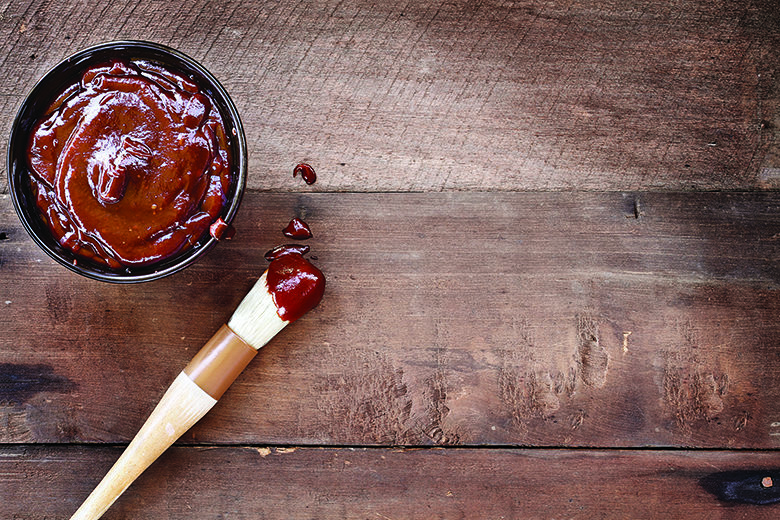
Brushing food with marinades, glazes and washes is an easy way to make meat, bread and other dishes better. Plus, it’s fun! With brush in hand, you only need a few extra minutes to make the final recipe or dish look more appetizing and taste more delicious. Like any other “paint job,” start by choosing the best brush, whether it’s glazing a fruit tart or basting barbecued ribs. Certain brush sizes, shapes and bristle materials may be ideal. Use this article as your guide.
DIY herb brush: For savory foods, consider assembling a brush using fresh herbs; wilted herbs also work. Wrap kitchen twine around the stalks of any herb or combination of herbs after they have been washed. Woody herbs such as thyme, rosemary and sage work best, but you also can use cilantro or basil. Wet the twine before using the brush on a grill. Use a forceful slapping motion rather than gentle brushing to help transfer the aromatic herb oils to grilled meat or the surface of bread dough. Only use herb brushes on food after the surface has cooked to prevent the spread of harmful bacteria. After use, remove the twine and cook the herbs in any recipe; otherwise, the herbs should be discarded.
Basting liquids: In addition to adding flavor, the purpose of brushing on a basting liquid is to cool the surface of a food to prevent over-browning.
Water-based. Use apple juice to cool the surface of pork when grilling or chicken broth when roasting a whole chicken or turkey. When basting poultry, brush only the breast to slow the cooking, since white meat is usually done before dark meat.
Oil-based. Reserve some marinade before using or after marinating poultry, fish or meat, cook the raw marinade by boiling for at least one minute. Then, brush it onto the roasting or grilling food to create a flavorful crust. Using an herb brush adds even more flavor. When barbecuing, do not brush on a sugary sauce until the meat has partially cooked. This will prevent unnecessary scorching; the sauce can still be brushed on several times at the end of cooking to build up flavor and crust. To prevent cross-contamination, use a clean brush each time.
Pastry washes: Washes can be brushed on prior to baking to enhance the surface texture and appearance of baked goods. Washes also act as an adhesive for nuts or other toppings. Use the right wash for the desired effect.
Egg washes. Brush on a beaten egg white for a shiny surface sheen. Use a beaten egg yolk for a golden-brown appearance. A beaten whole egg adds both color and sheen. For easier application, add one or two tablespoons of water to egg washes.
Glazes and sweeteners. Brushing on maple syrup, honey or simple syrup sweetens the crust of baked goods and makes it softer.
Milk washes. Milk, half-and-half or cream washes contain natural sugars, which turn a light golden color during baking.
Oil washes. Olive oil softens the crust of focaccia, enhances it with a rich flavor and makes it shiny. Butter does the same to a loaf of bread.
Water. Brushing water onto Italian or artisanal breads gives them an extra crisp crust. Use an herb brush to add flavor.
References
Can you reuse meat marinade? U.S. Department of Agriculture website. Published July 17, 2019. Accessed April 9, 2021.
Hensperger B. The bread bible: Beth Hensperger’s 300 favorite recipes. San Francisco, CA: Chronicle Books;1999:28-29.
Lopez-Alt K. The Food Lab: Better Home Cooking through Science. New York, NY: W.W. Norton & Company; 2015:327-328.
McGee, H. On Food and Cooking: The Science and Lore of the Kitchen. New York, NY: Scribner; 2004:154-155;158-159;399.
Poultry: Basting, Brining, and Marinating. USDA Food Safety and Inspection Service website. Accessed May 13, 2021.

